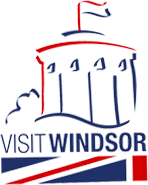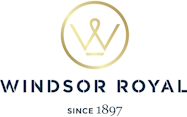_800.jpg)
Swan Upping is the annual census of the swan population of the River Thames. The ceremony of Swan Upping takes place during the third week of July every year. The reduced dates for 2021 have been announced (provided there are no Government restrictions in place in respect of Covid-19) by The Queen’s Swan Marker, Mr David Barber: departing Eton Bridge on Tuesday 20 July and finishing Thursday 22 July at Moulsford, Oxfordshire.
The important date for Windsor is Tuesday 20 July when the Swan Uppers can be seen leaving Eton Bridge at 8.30am.
The historic ceremony dates back to the 12th century when the Crown claimed ownership of all the mute swans. Today the Crown retains the right of ownership of all unmarked mute swans on certain stretches of the River Thames and its surrounding tributaries.
The ownership of the mute swans is shared with the Vintners’ and Dyers’ Livery Companies of London who were granted rights of ownership by the Crown in the 15th century by King Edward IV.
_800.jpg)
The traditional Thames rowing skiffs belonging to the Queen’s Swan Marker and the Swan Uppers of the Vintners and Dyers make their way upstream for their five-day journey and they are very distinctive with the scarlet uniforms of the Queen’s Swan Uppers and with each skiff flying the appropriate flags and pennants. In recent years, both HM The Queen and HRH The Princess Royal have travelled up the River Thames to witness the historic ceremony.
_800.jpg)
The duty of the Swan Uppers is to count the number of young cygnets each year and to ensure that the swan population is maintained. When a family of swans are spotted, the cry of ‘All Up!’ is heard; the boats are positioned carefully around the swans and the cygnets are weighed and measured to obtain estimates of growth rates. The birds are also examined for any sign of injury. With the assistance of The Queen’s Swan Warden, Professor Christopher Perrins of the University of Oxford, the swans and young cygnets are also assessed for any signs of disease. The cygnets are ringed with individual identification numbers by The Queen’s Swan Warden and the cygnets’ ownership is determined by their parentage, with all Crown birds left unmarked. Mr David Barber produces an annual report detailing the number of swans, broods and cygnets counted during the week at the end of Swan Upping.
The two goals of Swan Upping are conservation and education. Working with the River and Rowing Museum in Henley on projects for primary school children has resulted in a learning resource covering a wide spectrum of the national curriculum. This has enabled schools to focus on a number of distinct subject areas revolving around the river’s ecology and geography and the habitat it provides for so much of our wildlife.
The Swan Upping ceremony has become very popular over the years and many people now choose to follow the Swan Uppers to watch the process. Mr Barber only asks that the public do not get too close and hinder the work of the Swan Uppers.
Images courtesy Gill The Photographer www.gtp.photography
Related
Comments
Comments are disabled for this post.





 to add an item to your Itinerary basket.
to add an item to your Itinerary basket.















Comment removed by Post Author
Comment removed by Post Author
Comment removed by Post Author
Comment removed by Post Author